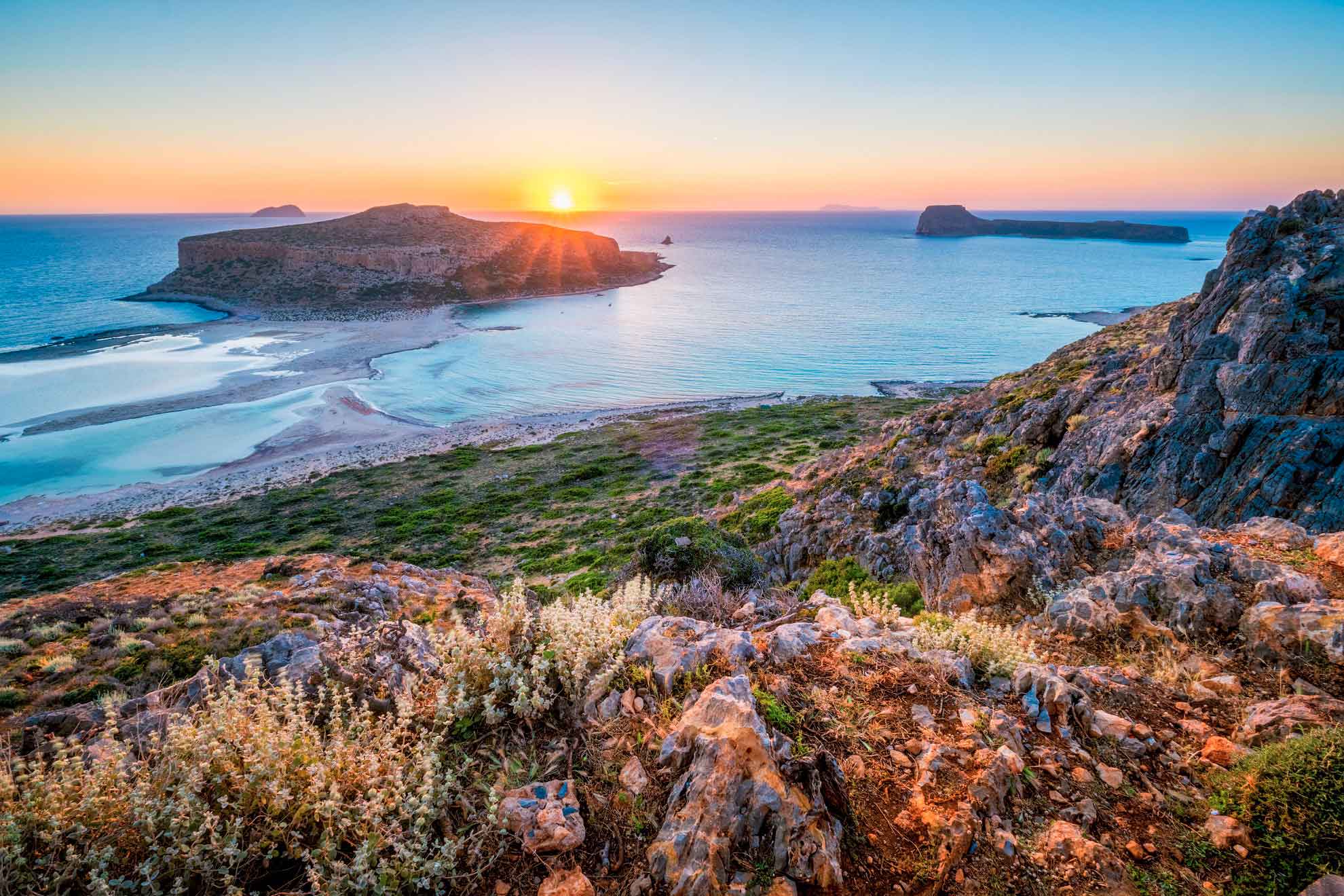
Crete and Greece
How to get to Crete
For a trip to Crete, the main access points are: Heraklion: port and airport Chania: port and airport, and Rethymnon: port. Most visitors come by plane, and more often on charter flights. Europe's major cities offer charter flights to Greece and Crete in particular.
By plane
National airlines (Air France, Swiss, Lufthansa, Alitalia etc.) fly to Athens or Thessaloniki. Then you have to connect with local airlines (Aegean, Sky Express, Olympic Air) to Heraklion, Chania, Rhodes, Corfu, Kos etc. For example, the flight time from Paris to Athens is approximately 3 hours.
Les vols charter directs sur la Crète sont proposés depuis Paris, Lille, Lyon, Nantes, Bordeaux, Toulouse, Marseille, Bruxelles, Zurich etc. Ces compagnies charter sont: Transavia, Aegean airlines, Easy jet, Volotea, Ryanair, Brussels Airlines, TUI fly, Edelweiss.
And almost every airport in Europe offers this destination, but with a stopover. These charter flights are generally available from April to October and cost between €150 and €450, depending on the period and the competition, and sometimes even much less, especially from Germany. But since 2023, prices have soared...
Pour la plupart, ils atterrissent à Héraklion et un peu moins à Chania (ouest de l’île). Notez enfin que la Crète faisant partie de l’Europe, votre passeport ou votre Carte Nationale d’Identité, en cours de validité, suffiront.
Your arrival at Heraklion Heraklion airport is located in the centre of the island, which is just over 250 km long. It takes 1 hour to get to Rethymnon (80 km) or to Agios Nikolaos (70 km), and 2 hours for Chania (170 km).
The north of the island is served by an expressway linking east and west. Heraklion's Nikos Kazantzakis airport is 5km from the city centre. To get there, you can either take a taxi or the No. 1 bus, opposite the Gate A Heraklion There are two bus stations in the town centre, one for the east of the island and the other for the west, with departures every hour in summer.
By ferry
1. from Italy
The journey takes at least 3 days if you go through Italy. In any case, the duration of the trip makes it difficult to envisage a stay in Crete of less than 15 days.
By Italy, via mainland Greece From Italy, via the Greek mainland: take the highway along the east coast of the peninsula to Ancona, Bari or Brindisi, 3 ports from which ferries leave for Igoumenitsa (north-western Greece, opposite Corfu) or Patras (north-western Peloponnese); from there, drive to Athens-Piraeus (approx. 3 hrs. drive), to take a boat to Crete.
You can also head to one of the 3 ports of the southern Peloponnese: Kalamata, Gythion, Neapolis, towards Kissamos (Kasteli) in western Crete.
2. From Greece
* En bateau depuis le Pirée (Athènes) : En été, 3 ou 4 départs tous les soirs (vers 20h-21h) depuis Le Pirée (Piraeus, le port d’Athènes), en direction d’Héraklion, Rethymnon ou Souda ( le port de Chania ). Arrivée à 6h du matin.
Ce sont des transbordeurs qui chargent motos, voitures, caravanes, camping-cars et camions. Quelques compagnies se partagent les destinations: Anek Lines, Minoan Lines, Blue Star Ferries, Seajets ou Fast ferries. Prix minimum (sans cabine): environ 45€.
* En bateau depuis l’un des 3 ports du sud du Péloponnèse : Kalamata, Gythion, Neapolis, pour prendre le ferry en direction de Kissamos (Kasteli) à l’ouest de la Crète. La Cie est « ANEN Lines » Tel: 003028210 24148 ou 24187. https://www.ferries.gr/anen-lines/
* By boat from Santorini, and arrival in Heraklion
* By boat from Rhodes, via the islands of Karpathos and Kassos. The arrival is at the ports of Sitia or Agios Nikolaos
As a general rule, it is preferable to make the Piraeus - Crete crossings at night, and we advise you to book a berth if possible, as the nights are very uncomfortable on the pullman seats. For further information: Ferries_in_Greece
Driving in Crete
When you leave the northern axis of the island (expressway), the road network is composed of paved roads, certainly, but not always well maintained. Winding roads, crossing mountains and villages, crossing pedestrians and ... goats. So, be very careful!
This isn't Switzerland! Here, we have the highest number of road accidents in the EU. The continuous white line separating the lanes is not respected when overtaking, the indicators are random, and the hard shoulder is used to pull over and allow yourself to be overtaken by another car that announces its intention by flashing its headlights.
So drive on this hard shoulder and let yourself be overtaken. It's allowed (tolerated?) but be careful if another car is parked there. The old Cretan peasants, otherwise friendly and welcoming, but with their old Toyota farm pick-ups, believe that the road belongs to them, and park as they please.
Seatbelts are often not worn, some motorcyclists ride without helmets, speed limits are often blithely exceeded, and traffic lights are sometimes ignored. I would add that, at night, you have to be doubly vigilant. Fatigue and, above all, alcohol make the roads dangerous because of the excessive speed of some people and, above all, overtaking.
So be careful! Finally, if you have an accident, serious or not, you must not leave the scene. The same goes for the other vehicle involved. Take a photo of its number plate, just in case. Some drivers don't even have a licence, and sometimes they're not even insured! Call 112 (emergency service, throughout the EU), and/or 100 from the police, and if you have a hire car, call the hire company immediately.
Have a good trip and a good vacation on this beautiful and welcoming island!
(Editor: Nikos Papadogeorgakis / Degeorges Nicolas)
Rent a car in Greece: Crete (Heraklion, Chania, Rethymnon, Agios Nikolaos) – Athens – Rhodes – Corfu – Mykonos – Santorini – Thessaloniki – Preveza/Aktion/Lefkada – Patras/Araxos – Kalamata – Paros – Syros – Kos – Naxos – Lesbos – Thassos – Zakynthos/Zante
